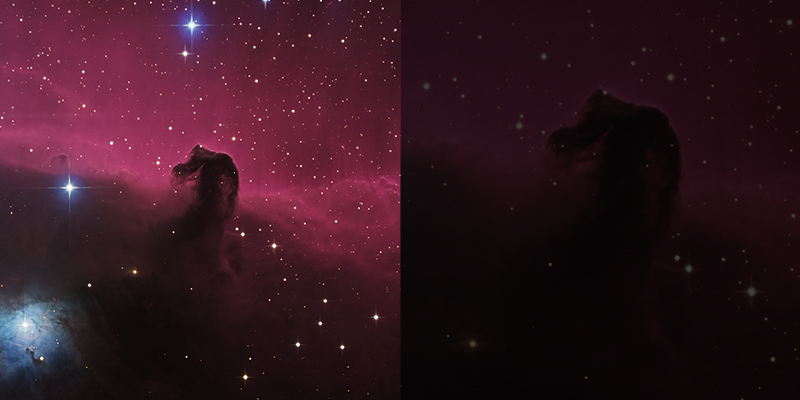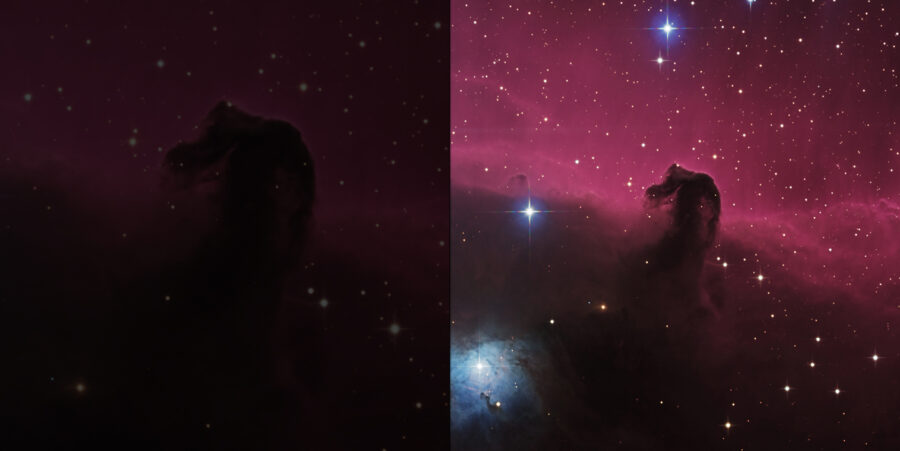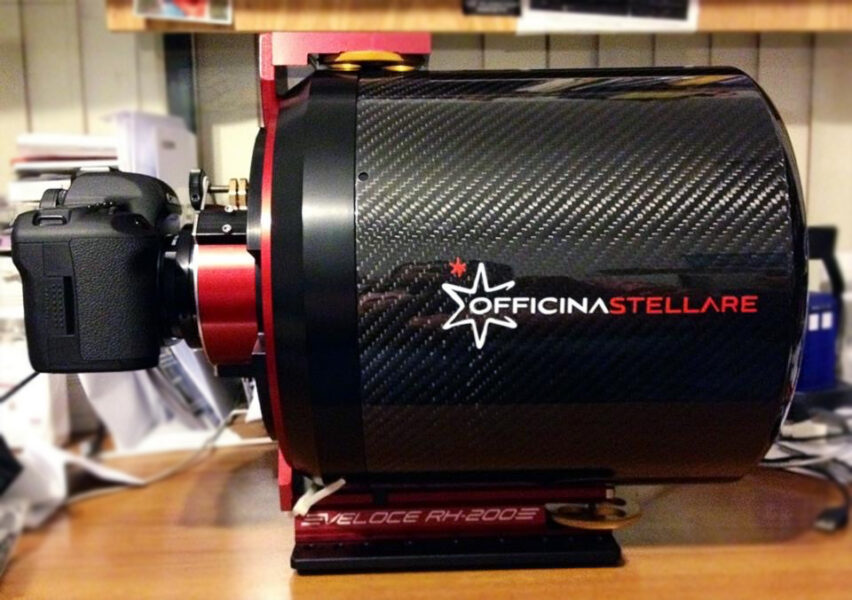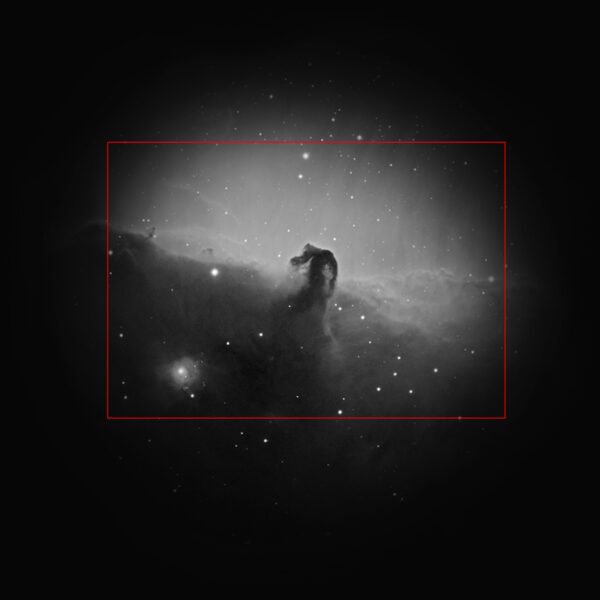Understand focal ratio to improve your astrophotography.
The key to astrophotography is light — the more, the better. And one of the keys to understanding light, and how to collect more of it, is the focal ratio: the focal length of your optic divided by its aperture.
Capture More Light, Without Spreading It Out
One of the most fundamental principles of photography is that the more light you collect, the less noise you’ll have — shot noise in particular. While both noise and signal increase with exposure time, noise lags behind at the square root of the signal. We typically average our individual sub-frames rather than sum them, so the net effect is that noise decreases with increased signal or exposure time.

Richard S. Wright Jr.
There are several ways to put more light on our image sensors. The most obvious is to simply expose for longer, either by increasing the length of individual exposures or by taking many shorter exposures and stacking them together in post-processing software.
You can also collect more light by increasing the aperture of your optic. The trick with this, though, is that even as you increase the aperture, you have to make sure the focal length doesn't change. Often, a larger telescope will have a correspondingly longer focal length, which affects image scale, so the image becomes larger. This sounds great until you realize that you're spreading the same amount of light over a larger area (your camera's sensor), and the more you zoom in on the target, the fainter it becomes.

Richard S. Wright Jr.
Note: Increasing your camera's gain, or ISO, won't capture more light. Do not pass Go, do not collect $200. At a certain point, gain becomes nothing more than a scaling value. Increasing your ISO can certainly make things look bright on the screen, but so does that little slider under the histogram. If you want less shot noise, you need more light.
Why Focal Ratio Matters
The tradeoff between aperture and focal length is reflected in the instruments focal ratio. A 200-mm (8-inch) telescope with a 2,000-mm focal length has a focal ratio of f/10. By contrast a 200-mm astrograph (a telescope designed for astrophotography) that has a focal length of 400 mm will have a focal ratio of f/2. Both telescopes collect the same amount of light, but the latter produces a much brighter image of your target.

Richard S. Wright Jr.
How is this possible? Simply put, you are swapping image scales, trading a larger, fainter image for a smaller one that concentrates light more and is thus brighter. The net result is less shot noise as well.
This can be confusing because both 8-inch telescopes are collecting the same amount of light, so how can one be delivering “more”? There are two ways to understand this. The first is that a faster telescopes delivers more light “per pixel”.
Secondly, we aren’t concerned with the signal-to-noise (S/N) ratio of the whole system, only what is delivered to our camera's sensor. The f/10 optic doesn't make use of a great deal of its light-gathering capacity. The f/2 system delivers more light right to your camera.
Why (and Why Not) to Use a Focal Reducer
So we know that a brighter image has more signal and less shot noise, which is highly desirable for our goals. Because of this, a popular accessory for astrophotography is the focal reducer. A focal reducer takes the light cone from a slower optical system, f/10 for example, and focuses it to a smaller area, effectively reducing the focal length and speeding up the focal ratio.

If your camera sensor (represented with the red rectangle) already covers most of the image circle, there is no light left to bring in from the outside. Too strong a focal reducer will just produce a smaller but brighter version of this circle on your sensor like the full field shown above.
Richard S. Wright Jr.
There are limits to this seemingly magical device, though!
Even in the 21st century, designing optics is challenging. A focal reducer can speed up an f/10 telescope to f/7 or f/6.3. But there’s nothing on the market that can speed up an f/10 optic to f/2. (Note: A HyperStar device doesn't count, it’s not technically a focal reducer, but instead it replaces the magnifying secondary mirror in a Schmidt-Cassegrain telescope to take advantage of the f/2 focal ratio of the primary mirror).
Suffice it to say, really fast optics need to be designed from the start to be really fast optics, and changing them after the fact is not always simple.
Another limiting factor has to do with your telescope's native image circle. The image circle is the fully-illuminated area an optic produces. Your camera sensor must fit inside this image circle in order to capture all of the light your optic can deliver.
But while a focal reducer can recover lost light falling outside your sensor, if it makes the image circle too small, you’re going to end up cropping your image to get rid of the dark corners. This is not vignetting, which can be corrected with flat fields or post-processing tricks; there is simply no light falling outside of the image circle.
Imaging with fast optics has its own tradeoffs, but there’s no question that fast focal ratios deliver more light to a smaller area, and more light always means less shot noise.
 3
3









Comments
Miles-Paul
March 15, 2021 at 3:44 pm
The first sentence states: " is the focal ratio: the aperture of your optic divided by its focal length. "
No it's focal length divided by aperture. Clear skis, Miles Paul
You must be logged in to post a comment.
Monica Young
March 15, 2021 at 4:52 pm
Thanks for pointing out the editing error, now fixed!
You must be logged in to post a comment.
John
March 20, 2021 at 12:57 pm
One side effect not mentioned is that sky light is also increased with the lower f-number so unless you are lucky enough to be in a low Bortle number area (not me, of course), the anticipated improvements may be vanishing small.
You must be logged in to post a comment.
You must be logged in to post a comment.